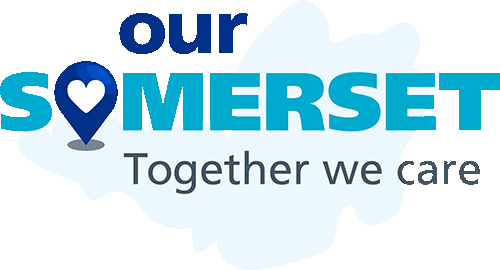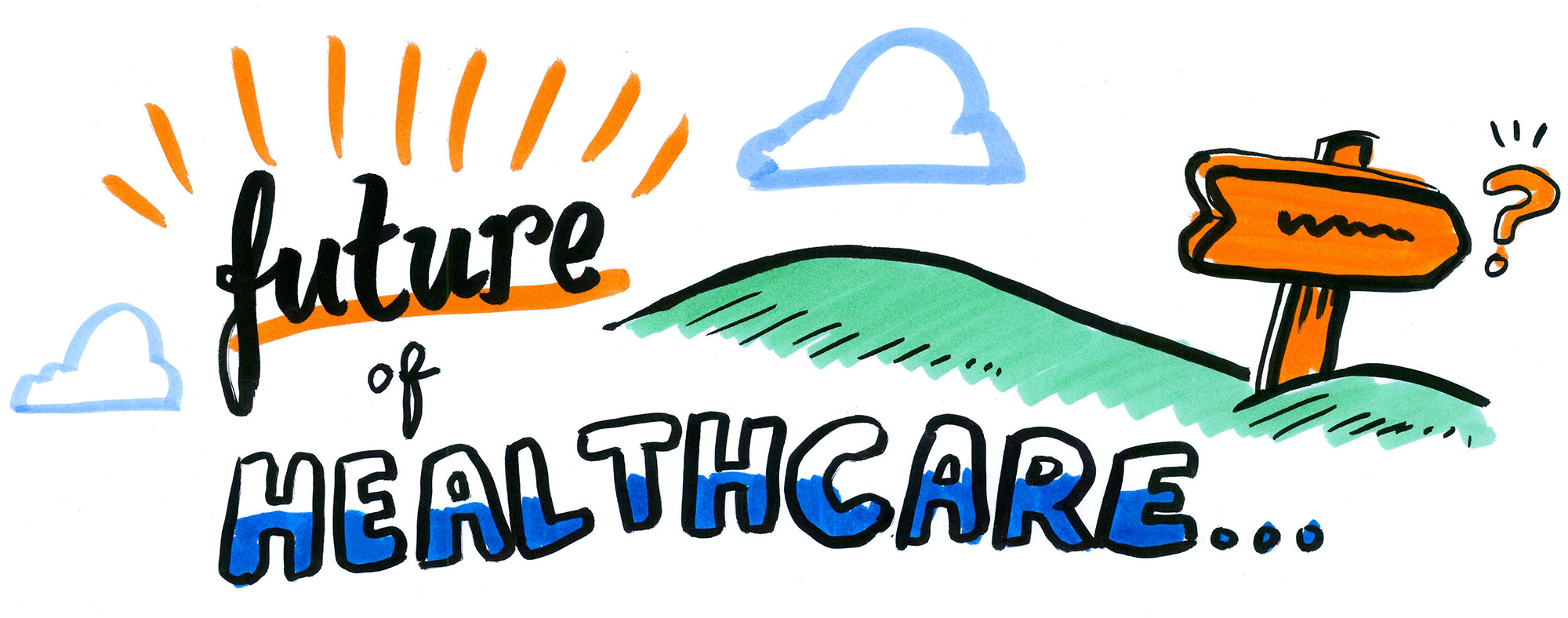Illustrations on this page by Laura Sorvala

Somerset, 2035 - a great place to live and work. Our workforce is delivering quality services and opportunities both with and for our communities to live healthier lives with a real sense of wellbeing. Somerset champions a local community-centred system of care, putting prevention, partnerships, and positive health outcomes at the heart of our county.
Things have changed in recent years with health, care, and the voluntary sector on an equal footing - a new normal. They work together and the focus of the workforce has been on proactively addressing the health and wellbeing needs of our population, shifting from reactive to proactive, embracing technology and education as we go.

Streamlining services and enhancing efficiency takes centre stage, with ever-improving seamless integration amongst community, mental health, acute and a range of care services. The workforce is encouraged to create increasing cross-organisational opportunities to cultivate innovation and adaptability.
Involving as many of the workforce as possible in shaping health and care has been challenging and, for a number of years, we've had to work through mounting pressures, resource constraints, a paradigm shift towards outcome-centric care, and the pressing need to address workforce shortages.

But with our shared commitment, changes in behaviour, and clear action we are seeing the rewards. Our population sees a difference too in how they experience services and there is a renewed sense of pride and trust in our care workforce.
Our vision now is to build on this good work and continue to create a healthier, more interconnected health and wellbeing landscape with an ever-increasing skilled and versatile workforce.
Exploring our journey further
Now in 2035, the world of health and care in Somerset has undergone a remarkable transformation. “People not patients” is our mantra; their journeys through life and through our health and care system are individualistic, their needs are at the centre, whether young, old, well or unwell. Our people in Somerset are supported by our workforce that holds them with love, care and compassion.

Our approach is based on key drivers: where collaborative working, preventative intervention, and person-centred care is front and centre, where community-based hubs and an agile and adaptive workforce work in harmony, and compassion is key. We are digitally innovative and understand that the vision of the 'health of the whole' requires being connected in the wider system, where education and learning are pivotal.

Our Somerset is truly caring and kind, and our people always come first. The values of trust, recognition, kindness, respect and teamwork were identified as fundamental in 2023 - values that are our drivers for people today.
It's not been easy, of course, but we started early. In 2023, we had to begin by recognising the real and practical everyday challenges we faced. An ageing population, rurality, recruitment and retention challenges, funding and resourcing dilemmas, and wider social issues. But we also knew that we simply had to begin - taking positive initial steps would lead to bigger changes. As one senior leader in Somerset said in 2023, “If we all truly align behind something, we can make anything happen. And some of these rules that we think stop us doing things aren't real.”

Careful planning has led to decisive action, and we have recognised that. In 2023, workforce planning started to be more than just producing a plan - it was about a fundamental cultural shift. There was a collective desire to do so, articulated by one leader who said “there's something about trying to get to a plan is not really the point - it’s the process of planning that helps you, not just having the plan.” Our ongoing workforce planning has been inclusive and proactive, recognising that multiple and diverse voices shape a more aspirational, integrated and ambitious future.
After a decade of radical reforms of services to improve, maintain and restore the health of individuals and communities, Prevention, Protection and Public Confidence have become the keystones of wellbeing in Somerset.

What principles helped us on the way to 2035?

Principle 1 Community and people focused
Areas for action
Create more local approaches
Promote health education in formal and informal ways
Actively involve and listen to communities in decision-making
Enable access to local health and wellbeing activities
Encourage personal responsibility for health
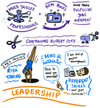
Principle 2 Valuing our workforce
Areas for action
Revise and embed new capabilities/skills
Improve education, training and development
Connect roles across the system
Recruit inclusively for competencies and not just qualifications
Create stability in the workforce
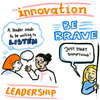
Principle 3 Innovation
Areas for action
Embrace digital approaches and solutions
Share data and information to enhance empowerment
Review and revise funding models, commissioning arrangements that are based on quality and not competition
Foster a learning culture that values diversity
Change the focus to prevention and early intervention

Principle 4 Collaboration
Areas for action
Define and agree a common language across our workforce
Work together to embrace challenge, thrive, and learn
Welcome and promote diversity, relationships and trust
Develop a culture where leadership sets direction and operates in a systems leadership context
Build on, create and embed more partnerships - private, public, third sectors, with equity of status
How did we do it?
From 2023, guided by these four core principles, leaders across the Somerset system pushed for change within their sphere of influence. The workforce, in all its diversity, worked hard to drive change and improvements through their collective sphere of control.
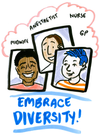
We have been truly collaborative
In our journey to 2035, we recognised working together as part of a constellation is better than merely being individual stars. Systems-based leadership has been crucial on that journey, with one middle manager saying “The leadership team gives the trust and permission for people to act differently, to work in a different kind of way.”
One senior leader in Somerset said in 2023, “the motivation for collaboration should be our population, it's kind of clear.“ Through truly collaborative working and leadership, the conversation has moved from targets and percentages to outcomes that focus on individual health and wellbeing.

In our integrated health and care service, partnerships and engagement are fundamental. The interconnections between community, public, private and third sectors have grown. Professionals work across different boundaries with greater alignment between Local Authorities and NHS to improve spending decisions. In 2023, Adult Care was often perceived as the “poor relation” - in 2035, equity of status is the hallmark of a healthy Somerset.
Senior leaders as early as 2023 were keen to highlight how important integration and connectivity between primary, secondary and care is crucial for health care. Those in need of care benefit from a seamless integration where we see the individual person rather than the condition that needs treatment.

Collaborative working in 2035 means that the 17 year age gap between life expectancy and healthy life expectancy for the general population in 2023 has reduced to 5 years, and more security in employment, food, energy, and access to a wide range of wellbeing activities has reduced the poverty-related life expectancy gap significantly. In 2023 another leader said, “you can see in terms of the widening in social inequality that people with money live longer because they can pay people to keep them alive.” That is no longer the case in 2035. We have restructured and refocused our budgets, invested in our communities and created new workforce competencies that are focused on people and not organisational silos.
One example of collaboration has been integration that extended to the very heart of healthcare - our workforce. In 2023, senior leaders emphasised the importance of collaborative care teams, removing silos between medical disciplines. In 2035, localised collaborative care teams across Somerset have become the norm. Doctors, nurses, AHPs, support staff, social workers, mental health specialists, and community health workers along with other partners now work in tandem to craft personalised care plans for people. This seamless teamwork ensures that every facet of a person's wellbeing is treated holistically and comprehensively.

Collaborative working has involved a shift in mindsets and attitudes. Support and challenge is welcomed across teams, and all staff are trained locally to encourage a culture of connection. Listening and questioning skills, approaches to building trust and inclusive approaches to managing change are part of training and development programmes, with managers and leaders being trained in systems leadership approaches through the new Somerset Training Academy which is affiliated with local universities. The focus is now on serving the people of Somerset, not simply the structures in the system, which has led to a transformational cultural change.
Prioritising prevention

The 'operating model' in Somerset in 2035 has been turned on its head, so that the focus is on prevention rather than treatment. This has been a key principle aligned with the purpose and strategy in Somerset, a cultural shift that has led to prevention, partnership and positive health models as a priority for the people of Somerset. One leader in 2023 said, “I've always been convinced if we did a big hearts and minds piece about everybody's role in prevention and personalised care and all of those things that treat people as individuals, people might go, it might be tough for the next 5 years but in 5 years' time it is going to be better.”
Greater alignment between organisations through collaborative working has led to a change to funding models to improve spending decisions. The previous short-term planning for immediate results has been replaced by a cultural shift in how budgets are managed for longer term preventative action. Although this has been challenging in the years leading up to 2035, with political, organisational and wider systemic tensions, aspirational leaders in 2023 nevertheless committed to planning a better community based model of care and support in Somerset with an impact in terms of the prevention agenda, health inequalities, and the health inequalities gap. Now in 2035, we see that we’re impacting on people’s health, rather than providing them with more healthcare.
This paradigm shift from reactive to proactive care has been a true game-changer. There are times when people need to access acute support, of course, when needed, but in 2035, the healthcare landscape is not just about treating illnesses; it's about preventing them. Senior leaders recognized in 2023 that investing in care, early intervention, and public health initiatives was just as vital as treating diseases and conditions. [018] Today, communities actively participate in promoting wellness, with local events, wellness workshops, and comprehensive health education programs. The population is healthier, and the healthcare system is less burdened by preventable diseases.
People-centred care

The journey to increased people empowerment is now the cornerstone of healthcare in 2035 . People are not merely recipients of care; they are active partners in managing their own health. They have access to information (including data systems), participate in shared decision-making, and have a say in shaping their care plans. This collaborative approach has not only improved individual satisfaction but also resulted in better health outcomes as people are more engaged and motivated in their own care. The workforce has moved from a focus on technical skills required to fulfil particular roles, and placed a strong emphasis on wider skills required to develop constructive and caring relationships with people. This is part of the training of every health and care professional in Somerset, and is a fundamental part of ongoing development.
Community hubs at the heart of health and care

People make neighbourhood communities, and these communities are best placed to meet the needs of people in Somerset now in 2035. Communities take ownership of their wellbeing and generate local resilience, social capital and contribute to reduced isolation and health inequalities. Community hubs have reduced the need to travel to access care. The view of one leader in 2023 was “the community is the building block of everything we do, not service footprints.”
With the investment in Somerset through economic development initiatives such as Hinkley Point C and the Tata electric vehicle battery factory, the foresight of one leader has come to fruition when they predicted: “we're going to see new homes, new people moving into our community, more better off people who look after themselves really well, who understand about their own wellbeing, who have got a sense of purpose. Collectively, as a community, we can do that.”
In 2023, forward-thinking health and care leaders recognised the significance of bridging the gaps between primary, secondary, and social care. The vision for integrated health hubs has since become a cornerstone of modern healthcare in Somerset, serving as central access points for healthcare journeys. Within these hubs, people navigate seamlessly from routine primary care check-ups to specialised treatments and consultations with health and care professionals. Gone are the days of fragmented care; instead, people find comprehensive services under one roof.
The role of community hubs has developed to be an integrated, collaborative centre for people providing a breadth of health and wellbeing experiences, from counselling, yoga, health coaching and meditation to partnerships between health (including GPs), social work, voluntary and private providers to supply high-quality services such as diagnostics, prevention, rehabilitation, and minor care. There is a network of residential and nursing care facilities linked to the community hubs, which also offer step-up and step-down facilities (beds) to enable recovery on discharge from acute services.

Allowing people to access good quality care, closer to where they live has been a significant step, and has also fostered more community responsibility where the local community and local volunteers create approaches for positive self-support.
From 2023, and with a focus on Community Development, the ICB extended the formal partnership with community, voluntary and third sector organisations building a holistic decision-making body. This systems thinking mindset provided an improved focus on shared priorities, aligned around the community. Several senior leaders saw this connectivity was essential, achieving a balance between primary care, secondary care, and community-based care being crucial to improving population health. This more proactive and community-based approach extends to primary care as there had been a strong sense from several senior leaders that the traditional model of primary care was not sustainable in the long term due to increasing demand and changing needs. In 2023, one leader stated, “I had a Kodak moment and I thought “right, what does that mean for us, and what direction should we be swimming in, and what are we not seeing that really, in 5/10 years - we'll be looking back and saying “really, you didn't see that, how come?”’ Perceptive and pragmatic leadership recognised this need for change and how the workforce needed to be realigned.
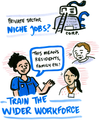
A community approach also includes wider education as part of the system. Schools and colleges in Somerset are part of an approach to get things right for every child and young person, including health, wellbeing, nurturing, personal growth and future employment opportunities. Community access to a diverse range of sporting and leisure facilities provides opportunities for both active physical health and mental wellbeing for people of all ages.
Our workforce is now agile and adaptive
In 2035, in Somerset our workforce has been transformed from the traditional role and responsibilities more common in 2023. This has enabled a breaking down of boundaries, and encouraged multi-skilled professionals. Person-centred care is a paramount principle in our workforce, where we work well together, and agile and transferable skills and capabilities have equal status to technical knowledge and ability The siloed workforce of 2023 has been replaced by one where collaboration and communication are key. Wider competency-based approaches have replaced traditional recruitment requirements.
In 2023, it was recognised that change was needed. One leader said, “We are continually trying to get sufficient supply for our traditional service models, but we recognise we can’t keep doing that because we know the people aren't there… And the whole strategy is about changing the demands that are placed on us, so that we can have different service models. And I'm not sure we know how and where those things come together, or where they miss each other completely. So where does the lack of supply force us to change the service delivery model, and are we doing that proactively, or are we waiting for the crisis and being forced into it?”

So, it was recognised that our workforce is our most important asset - now in 2035, people are valued, and our leadership is committed to investment in training, diversity, and attractive working conditions. There is also considerable strength of support in our population, especially where our community and non-paid workforce play such a key role. Through collaborative working approaches, in 2035 there is a more integrated and equitable workforce across health and care where boundaries are blurred between sectors. There is a focus on the mental health and wellbeing of our staff, and roles are interconnected across the system to prevent retention issues and develop opportunities.

Where possible, roles become multi-faceted which has made a positive impact on recruitment and retention numbers which simply were broken in 2023. As emerging health and care roles have developed based on capabilities and competencies, this in turn has influenced the job market rather than the old-fashioned and traditional way of 2023 where the job market dictated the types of roles that were recruited. The ICB executive has coherently and authentically led the workforce development in a principled and innovative way. Workforce morale is significantly higher than in 2023 and people now feel more empowered, have developed skills, and use equipment and technology more effectively. They are part of a learning organisation and have a more balanced life.
The university centre in Somerset with a dedicated health and wellbeing faculty has been formed. The aspiration for this was set out in 2023, and one senior leader now describes it as “a real central hub for skills exchange, knowledge exchange, and to build a vibrant workforce for the future that is digitally savvy, hugely flexible in what they do, working in different environments with new ways of engaging with the community. It's a really dynamic and lively faculty of Health & Wellbeing that really pushes on and develops a dynamic workforce.”
We are digitally connected
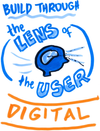
The health and care system in Somerset is digitally enabled and uses technology in an innovative, people-centric way in 2035. Technology, such as wearables, is used for personalised care and early intervention and prevention. Technology in itself is not the answer - it is our human responses that are key; yet technology and digital advancements as support tools have upskilled our workforce, and enabled people in communities to take further responsibility for monitoring, managing and intervening in their own health care.
Of course, culture and habits can take a long time to change, and there remain sections of the population - particularly amongst the elderly and in the remaining pockets of deprivation in parts of Somerset - where accepting a digital approach is challenging, and a high demand for acute care amongst some can still be seen. The response of self-supporting communities, however, plays a key role in helping those who are more vulnerable and finding change harder.

Overall, however, the links between technology and data are key. Initial fears over digital technology and Artificial Intelligence have largely been assuaged due to careful management protocols and secure systems that have been put in place.
Digital health has now accelerated the realisation of integrated healthcare. Now in 2035, every individual carries their health records, treatment plans, and real-time health data within secure, user-friendly mobile apps.

These apps serve as the nexus, connecting people, healthcare providers, and care workers. People can effortlessly schedule appointments, track their health progress, and receive AI-driven health advice through these portals. The once-elusive dream of complete medical portability has become a daily reality.
The successful integration of data from diverse sources has unlocked many healthcare insights. Machine learning and artificial intelligence have evolved to the point where they can predict health trends, identify at-risk populations, and allocate resources efficiently. Health and care leaders in 2035 can make informed decisions based on real-time data, leading to better outcomes, improved resource allocation, and cost savings.
In summary
The vision of health and care staff in 2023 has evolved into a planned system where integration, connectivity, and people-centeredness are the norm.
The result is a healthier, more informed, and engaged population in Somerset, leading to better health outcomes, longer lives lived well, improved experiences, and a brighter future for all. It is the melding of systems leadership, collaboration, moving into a digital world and putting communities at the centre that has been led with courage, compassion, conviction and connection. Our people are all that matter, and that is clear to see in Somerset in 2035.
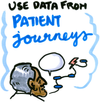
Some individual journeys in 2035
The following stories are based on the principles and key developments that have been explored. They aim to provide brief cameos of different people experiencing the health and wellbeing system in 2035.
Read them, reflect and consider the following questions:
- What were the key system touchpoints in each person's journey?
- What enabled each person to take individual responsibility for their own health decisions and actions?
- What different skills and capabilities were required to make each person's journey the best it could be?
- What would improve their journeys further?
Sarah's Story
Sarah is a 42-year-old professional living in Taunton, juggling work, family, and personal health. Sarah's journey begins at her local integrated community healthcare hub, a place she's come to appreciate over the years. Here, her healthcare is seamlessly woven into her daily life. She schedules appointments, accesses her medical records, and communicates with health and care providers through a user-friendly mobile app. The hub's warm and welcoming atmosphere ensures that healthcare is not a chore but a part of her well-rounded life.
Personalised Health Plan
Sarah's healthcare is anything but generic. Her care team, including her primary care physician, a nutritionist, and a mental health counsellor, works collaboratively to craft a personalised health plan. They consider her medical history, genetic predispositions, and lifestyle choices. Sarah is an active participant in these discussions, ensuring her voice is heard in shaping her healthcare journey.
Preventive Care and Wellness
Sarah's health and care journey extends beyond the clinic. In her community, she participates in wellness workshops and local health education programs. These initiatives focus on prevention and overall wellbeing. Sarah, once apprehensive about her health, now takes an active role in managing her lifestyle and making informed choices that promote her long-term health.
Data-Driven Insights
Sarah's health is continuously monitored, and her data is used to predict potential health risks. Her AI-powered health assistant sends timely reminders for check-ups, screenings, and lifestyle adjustments. These data-driven insights enable her to stay one step ahead of health challenges, ensuring early interventions and peace of mind.
Emotional Wellbeing
The integration of mental health and care into Sarah's healthcare journey has been transformative. Sarah has access to a mental health counsellor who helps her navigate life's challenges. Care workers provide support when needed, ensuring her overall wellbeing is a top priority.
Global Community of Support
Sarah's health and care is not confined to her local hub. Thanks to the global adoption of integrated healthcare models, she can easily access healthcare services when travelling or seeking second opinions. She feels connected to a worldwide community that shares healthcare knowledge and best practices.
Empowerment
Above all, Sarah feels empowered. She is not just a passive recipient of care but an active partner in her healthcare journey. Her values, preferences, and goals are respected and integrated into her care plan. She finds comfort in knowing that her healthcare team listens, cares, and supports her throughout her life's journey.
Sarah's healthcare experience in 2035 is a testament to the person-centred approach that senior leaders envisioned in 2023. Her journey illustrates how health and care integration and connectivity have not only improved her health outcomes but also enriched her life. She is living proof that when healthcare puts people at the centre, it becomes a journey of wellness, empowerment, and fulfilment.
Ajay's Story
Ajay is a 10-year-old living in Yeovil in 2035 looking forward to facing life's challenges and opportunities as a young adult. He has grown up in a world where healthcare was seamlessly integrated into daily life, a stark contrast to the fragmented system of the past.
Connected from the Start
Ajay's health and care journey began before birth in 2025 . His parents used a state-of-the-art mobile app that monitored the progress of pregnancy, providing real-time updates and personalised guidance. Ajay's early connection to the healthcare system ensured a healthy start in life.
The Integrated Health Hub
Along with his parents, Ajay visited his local integrated health hub for a check-up. He had been feeling run down and lacking energy recently, which was unusual for him as he enjoyed a lively social life and was physically active, playing football and cricket. On his visit, the hub was a hive of activity, bustling with diverse health and care professionals. Through the mobile app, Ajay and his parents scheduled the appointment, filled out health questionnaires, and accessed his previous medical records with ease. The waiting area when he arrived felt more like a welcoming lounge than a clinical space.
Personalised Wellness Plan
During the appointment, Ajay's care team, which included a primary care physician, nutritionist, and mental health counsellor, took the time to get to know him personally. Together, they crafted a wellness plan tailored to Ajay's lifestyle, preferences, and health goals. Although young, his voice mattered, and he was encouraged to talk about his lifestyle, his thoughts and his feelings. This collaborative and inclusive approach made Ajay feel heard and empowered.
Preventive and Holistic Care
Ajay was a proactive participant in his health. He decided to attend wellness workshops at the hub, focusing on nutrition, exercise, and stress management. These community-centred programmes emphasised preventive care, instilling lifelong habits that went beyond just treating illnesses.
Digital Insights for Health
Ajay's health was closely monitored using advanced digital tools. His wearable device tracked vital signs, sleep patterns, and activity levels. AI-driven algorithms analysed the data, providing insights and helped him to take decisions about his own next steps. Ajay received notifications for timely check-ups and personalised health tips, helping him stay ahead of potential health issues.
Emotional Wellbeing
Ajay's mental health was equally important. He has access to a virtual mental health counsellor through the app, who provides guidance during any challenging times. The integration of mental health support into his healthcare journey helped Ajay maintain a happy and balanced life.
Empowerment and Fulfilment
Above all, Ajay felt empowered. He wasn't merely a passive recipient of healthcare; he was an active partner in his wellbeing journey. His values, aspirations, and preferences were respected and integrated into his care plan. Although young, he felt empowered and able to be in control of his own life from an early age.
Ian's Story
Ian has grown up in a deprived area of Bridgwater. where access to quality healthcare was a distant dream. For most of his life, he and his community have faced numerous challenges, including economic hardship, poor educational opportunities and outcomes, and healthcare disparities. However, as the years passed, he witnessed a remarkable change in the way health and care was delivered by 2035.
The Beacon of Hope
Ian had always struggled with both physical and mental health issues which were exacerbated due to limited resources and lack of information. However, in 2035, he found a beacon of hope in the form of a newly established integrated community health hub in his community. This hub has become a lifeline for residents like Ian.
Personalised Care
Ian's journey began when he made his first visit to the hub. A friend in his local community had spoken positively of his own experiences which encouraged Ian to be involved. The team of health and care providers was compassionate and sensitive, addressing his unique needs and concerns. His assigned care team took time to understand his background, challenges, and aspirations, which helped tailor a personalised care plan with him.
Community-Based Wellness Programmes
Ian became an active participant in community-based wellness programmes hosted by the community hub. These programmes focused on preventive care, nutrition, and fitness, enabling him to take charge of his health. Ian joined a support group of peers who shared similar experiences, creating a sense of belonging and camaraderie he had never felt before.
Digital Health Assistance
Ian was given a smartphone that became his gateway to a world of healthcare information. He could schedule appointments, access educational resources, and even receive medication reminders through a user-friendly app. The digital tools provided him with the knowledge and tools he needed to manage his health proactively.
Mental Health Support
For years, Ian had silently battled depression, which often went unnoticed. Now, with the inclusion of mental health support as an integral part of his care, he has had access to a counsellor who has helped him address his emotional wellbeing. He no longer felt alone in his struggles.
Empowerment in the Face of Adversity
Ian's journey is a testament to the power of integrated health and care. He is no longer a passive recipient of care but an empowered and responsible citizen caring for his own wellbeing, but with compassionate support within a well developed, healthy and resilient community. He now feels seen and heard, and his voice is integral in shaping his own health actions.
Margaret's Story
Margaret is an 82-year-old living in Frome, with a spirit as lively as ever, who has witnessed the remarkable evolution of health and care throughout her life. She had grown up in a world where health and care was often fragmented, but in 2035, she was experiencing a system that put her at the centre of her own care.
A Seamless Beginning
Margaret's health and care journey in 2035 began with a simple tap on her tablet. Although initially reluctant, a digital support officer from the community hub visited her at home to provide her with assistance in using the device. She is now confident thanks to the patient and compassionate approach that was taken.
She scheduled a telemedicine appointment with her primary care physician, Dr. Miller, for a regular check-up. The convenience of virtual visits had made healthcare accessible, even when mobility was a challenge. As she awaited her appointment, she reflected on how far health and care had come since her youth and was impressed.
The Modern Integrated Health Hub
Margaret's health and care hub is a place of comfort and community. It is more than just a medical facility; it is a space where people from all walks of life come together. Although a little wary at first, Margaret's journey there was effortless, thanks to the ride-sharing service provided for senior citizens. She was warmly greeted by familiar faces as she entered the hub.
Personalised Care
Dr. Miller, in collaboration with a geriatric specialist, designed Margaret's care plan with precision. Her health history, current needs, and her wish to stay active and independent were all considered. Together, they discussed her medications, nutrition, and exercise routines, making sure her plan aligned with her goals.
Wellness for the Wise
Margaret has regularly attended group wellness programmes tailored to seniors at the hub. These programmes focused on gentle exercises, fall prevention, and even art therapy, fostering both physical and emotional well-being. Margaret appreciated the social aspect of these gatherings, forging new friendships and sharing stories with her own peers.
Digital Guardian of Health
Her wearable device, a sleek wristband, monitors her vital signs and alerts her to potential health concerns. The device seamlessly transmits data to her care team, ensuring that any changes are addressed promptly. It is her silent guardian, providing reassurance in her day-to-day life.
Mental Health and Connection
Margaret, like everyone else, has access to a virtual mental health counsellor. Loneliness could sometimes creep in, but her counsellor was just a video call away, offering a listening ear and strategies to maintain her emotional well-being. Margaret felt truly connected, even in moments of solitude.
Empowered Ageing
Margaret's health and care journey is one of empowerment. She actively participates in decisions about her health, and her values are respected. She revelled in the sense of control over her wellbeing, embracing each day with enthusiasm and is full of life and energy.
As Margaret continued her journey in 2035, she marvelled at how health and care integration and connectivity had transformed her twilight years. What was once a maze of appointments and paperwork had become a journey of connection, wellness, and empowerment. The vision that senior leaders had in 2023 had truly come to life, making Margaret's later years a time of vitality and fulfilment.
